內容目錄
In the exhibition greenhouse of the National Botanical Garden of China (North Garden) (formerly Beijing Botanical Garden), there are three giant konjac plants, a rare and endangered plant in the world, nicknamed the “three auspicious treasures” of the garden.
It only blooms three or four times in its lifetime, the flowering period is only 48 hours, and the record of flowering under artificial cultivation is only more than 100 times in the world… This giant plant is a real “magic plant”. More than 10 years after the giant konjac was introduced into the National Botanical Garden (North Garden), recently, three giant konjac plants have “bloomed together”, attracting a large number of tourists to watch.
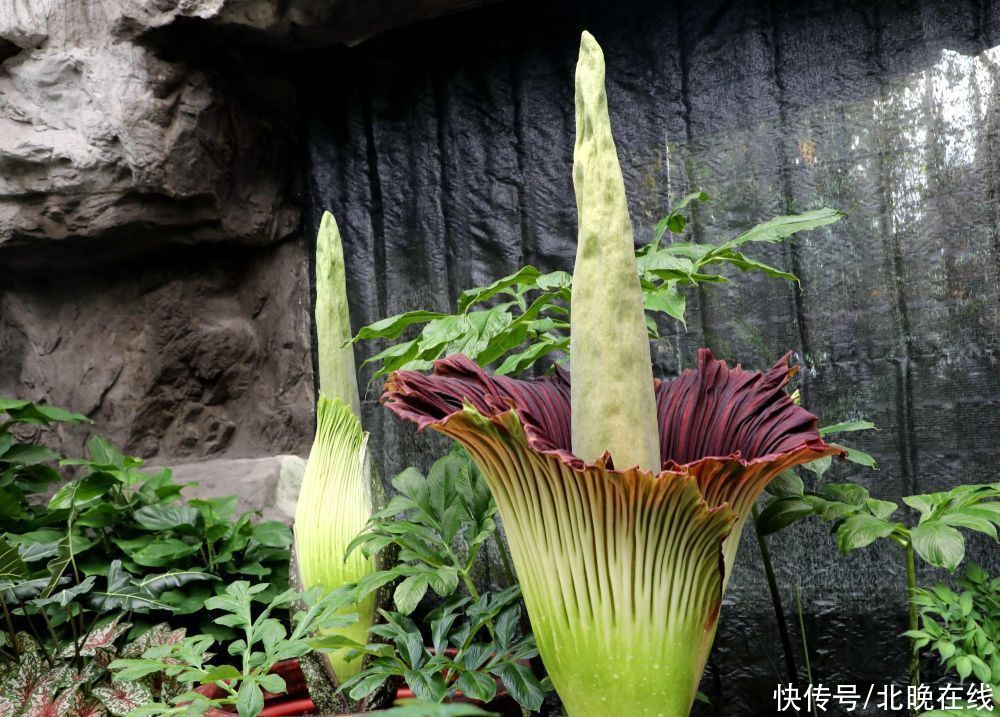
The picture shows a flowering giant konjac (right) and a giant konjac that is about to bloom (left). (Photo provided by the interviewee)
On July 6 and July 19, “Da Bao” and “Er Treasure” bloomed successively, and their “heights” were 1.61 meters and 1.68 meters respectively. On July 23, “Three Treasures” bloomed again. The reporter saw in the tropical exhibition greenhouse of the National Botanical Garden (North Garden) that the third giant konjac was in full bloom, and the huge purple-red flower buds stretched out, revealing the “long chimney” inflorescence axis. The staff is checking the temperature and the high volume. It is said that this giant konjac is 1.86 meters high and is the tallest of the “Three Treasures”.
The blooming of “Three Treasures” has become a “happy event” in the botanical garden community. According to the National Botanical Garden (North Garden), this is the first time that China has successfully achieved “group flowering” of giant konjac under artificial cultivation. Why is it so difficult for giant konjac to bloom? Wei Yu, executive deputy director of the National Botanical Garden (North Garden), exclusively revealed the “growth mystery” of this magical plant to a reporter from Xinhua News Agency.
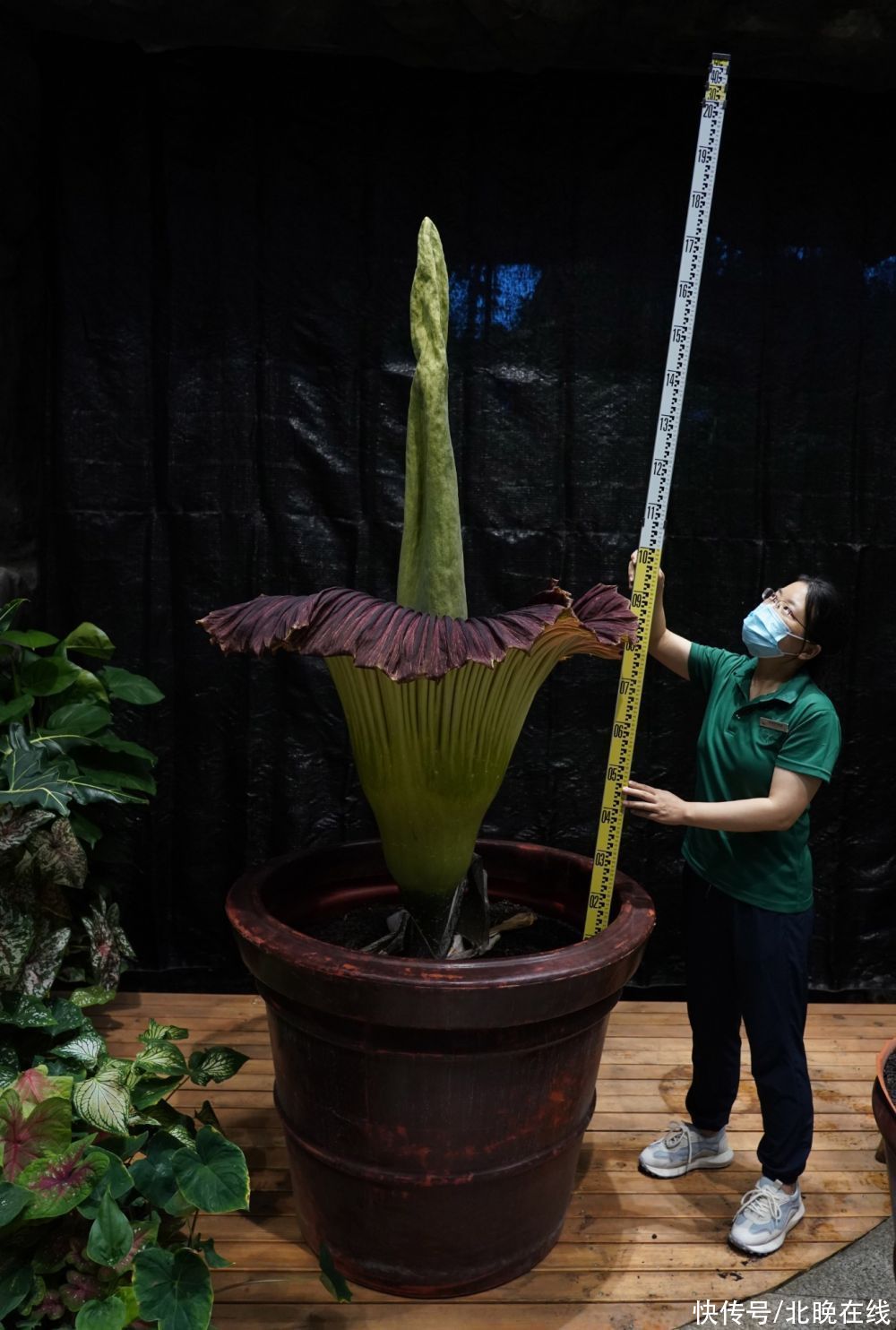
The picture shows researchers measuring the height of the third giant konjac. Photo by Xinhua News Agency reporter Ren Chao
Wei Yu said that the giant konjac originated in a very narrow area in the tropical rain forest of Sumatra Island, Indonesia, and was first discovered in the 19th century. This plant has very strict requirements on the growth environment. The optimal growth temperature is 26 to 28 degrees Celsius, and the relative humidity is required to be above 80%. “It is very difficult to artificially cultivate giant konjac because it is difficult to ensure the stability of its living environment.”< /p>
Not only are there strict requirements on temperature and humidity, but the growth and flowering of giant konjac are also irregular. Wei Yu introduced that in general, it takes 7 to 10 years for giant konjac to bloom from seed to first bloom, so every bloom will be recorded as a major event.
“To cultivate it well, it needs very careful care by the conservation staff, and the conservation requirements are very high.” She said, “This time the ‘three sisters’ are all blooming, which also reflects the National Botanical Garden’s development in these years. Plant ex situ conservation, scientific research and cultivation and conservation have reached a certain level.”
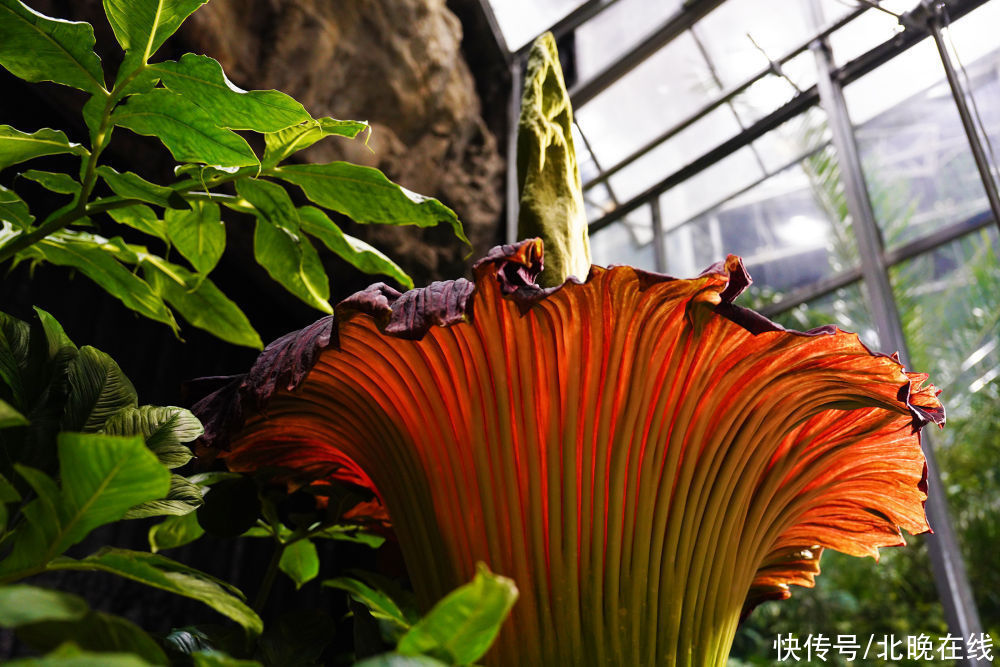
The picture shows a giant konjac in full bloom. (Photo courtesy of the interviewee)
The giant konjac is a “notorious” flower. If you get close, a rancid smell will hit your nostrils immediately. It is reported that when flowering, the giant konjac will release its own synthetic gas containing more than 100 chemical substances, which reflects the “survival wisdom” of this “limited-time flowering” plant.
“The flowering period of the giant konjac is very short, especially its female flowers only open on the first night. In order to increase the reproductive efficiency in the short term, it emits a stench to attract scavengers to pollinate it. In order to make the odor spread farther, it also produces its own heat dissipation mechanism, which can spread the odor several kilometers through the tall appendages, that is, the chimney-like organs in the upper part of the inflorescence. But on the second day, basically Instead of smelling the stench, you will smell some fragrances similar to tropical fruits.” Wei Yu explained.
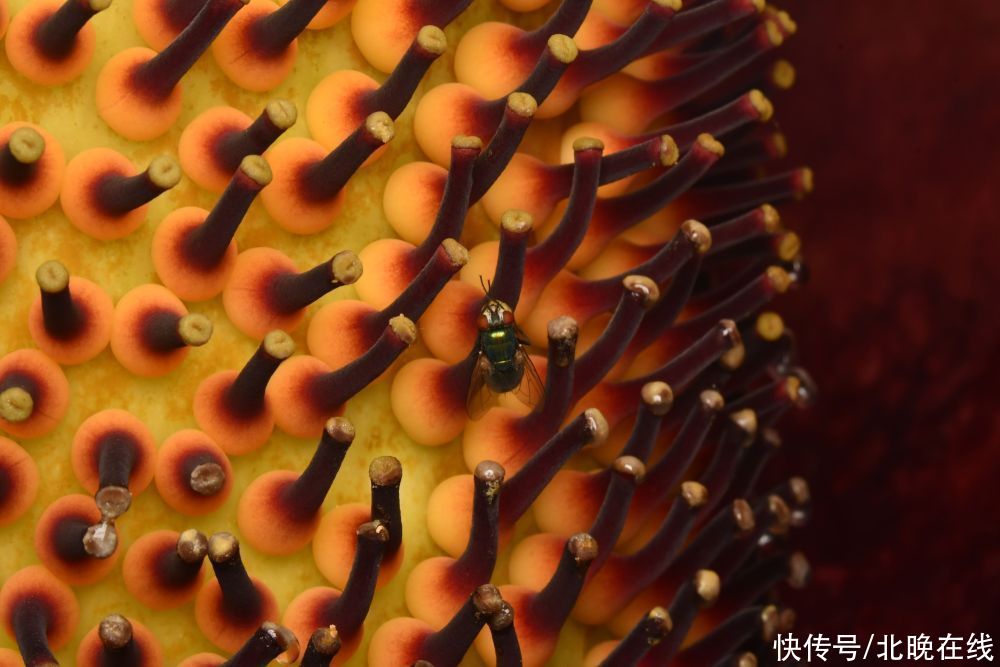
The picture shows the female flower of the giant konjac. (Photo courtesy of the interviewee)
During the blooming process of “Auspicious Three Treasures”, the researchers of the botanical garden also took the time to carry out relevant scientific research work, such as artificial pollination for giant konjac to help its reproduction and fruiting, and monitoring with infrared cameras. Its heating mechanism is expected to understand its heating principle.
It is understood that the giant konjac is difficult to “self-fertilize” in nature, and artificial pollination can facilitate its better fruiting. “This time we opened three flowers at once, which created an opportunity for artificial reproduction. We could take pollen from the first plant, then give it to the second plant, and then the second plant took pollen and gave it to the third plant. Before. We are in great pain because we only have one flower, and we can’t find pollen to give it to.” Wei Yu said.
An important work of the National Botanical Garden is the collection of germplasm resources. As a rare and endangered plant, the introduction and cultivation of giant konjac is of great significance to the National Botanical Garden.
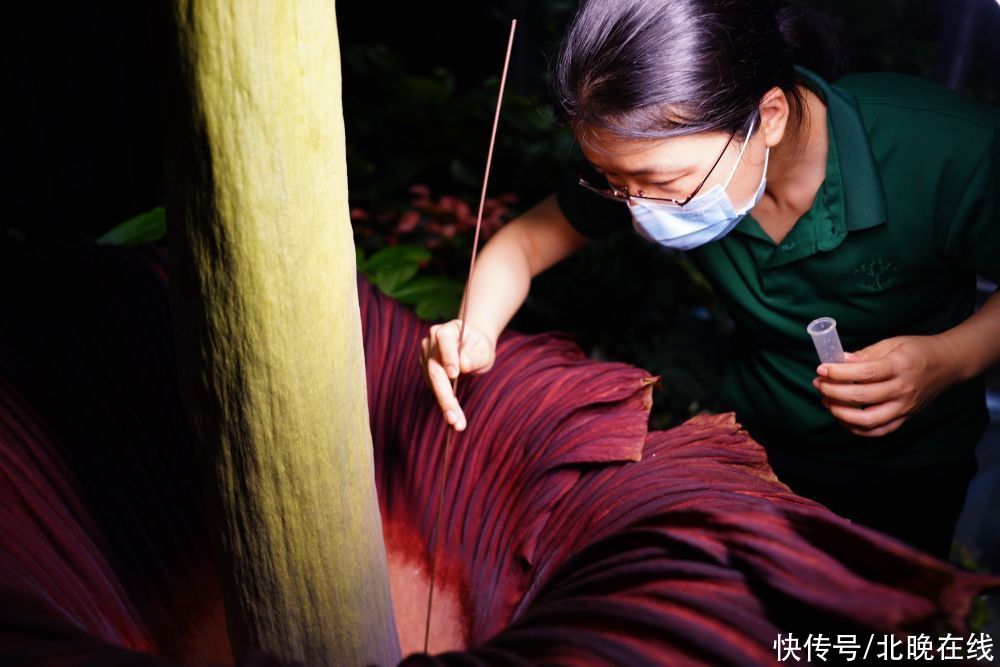
The picture shows researchers collecting pollen from the second giant konjac. (Photo provided by the interviewee)
“The wild life of the giant konjac is at risk, and it is very endangered. What we need to do is to strive to preserve its germplasm genes, reproduce and protect it well. Of course. Not only the giant konjac, but in fact all these endangered and threatened plants, we must protect it.” Wei Yu said.
It is reported that in addition to the giant konjac, the National Botanical Garden has introduced and cultivated more than 1,000 species of rare and endangered plants, and these magical plants will be exhibited to the public one after another.
“The giant konjac is a very special existence in the plant world.” Wei Yu said that in order to allow tourists to understand this rare plant and see the giant konjac blooming, the botanical garden also specially produces related popular science books. Display board and set up a special exhibition, “We hope more people can know it, understand it, and protect it.”
Source: Xinhua News Agency
Process Editor: TF099